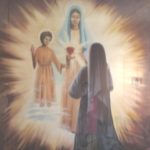We suggest this intention : on this first Saturday of the month, let us offer our prayers and sacrifices in order to atone for the blasphemies of those who offend Our Lady in Her holy images.
St John Damascene (676-749), who was born in a Christian Syriac family, has always been an active defender of icones. He is Father and Doctor of Catholic and Orthodox churches.
In the Byzantine court, in the VIIIth century, the movement of iconoclasm was suddenly started. It was a movement which wanted to forbid people from praying in front of images. St John, who was then a high-ranking officer in the court of the Omeyyade Caliph, wrote several treaties attacking those who criticized these holy images. This caused a great turmoil among the faithful. Therefore, he was called by the caliph. As he was anable to convince the caliph, the latter ordered his soldiars to cut his hand off. He would also lose his post. He then intensely prayed to Our Lady and his hand was miraculously reattached. So he returned to see the caliph who recognized the truth of St John’s treaties and wanted John back on his post. St John refused as he wanted to retire and become a monk. Since this episode, some icons of Our Lady with three hands started to be seen.
After that, the Council of Nicea (787) declared that the devotion to the images of Saints was a devotion to the Saints themselves and not an act of idolatry.
« Those who have loved someone, will automatically venerate the things that belonged to that person » says Saint Thomas Aquinas (who died in 1274).
When we admire an object that was used by a loved one, our affection is not directed towards this object but towards the person whom we have cherished. These objects remind us of that person and of the good times we have spent together.
The worship of images takes its origins in such a natural human behaviour. If we keep « souvenirs » of persons whom we have admired, then, of course, we can venerate the image of a Saint who was a disciple of Jesus Christ and a temple of the Holy Spirit. This applies even more to Our Lady.
Our Lady is the mediator of all graces, She is Co-Redemptor and therefore all Her statues remind us of the love of God for us.
The Catholic Church has always maintained that statues and pictures are channels through which we can receive God’s graces. The images of Our Lady and of many Saints help us to approach them more easily. They are tangible devices given to us to help us lift up our hearts and souls and follow the examples of those who have served and loved God and, in this way, have become saints of the Holy Church.
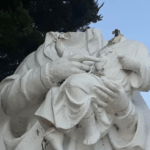 In August 2018, on the island of Noirmoutier (Vendée, France), a statue (three and a half metres high) of Our Lady holding the Infant Jesus, was profaned. Our Lady and the infant Jesus were beheaded. This statue was erected by a villager on a plot of land given in acknowledgement of a favour granted by Our Lady. « My grandmother had promised to give a plot of land if her three sons came back safe after the war ».
In August 2018, on the island of Noirmoutier (Vendée, France), a statue (three and a half metres high) of Our Lady holding the Infant Jesus, was profaned. Our Lady and the infant Jesus were beheaded. This statue was erected by a villager on a plot of land given in acknowledgement of a favour granted by Our Lady. « My grandmother had promised to give a plot of land if her three sons came back safe after the war ».
Nowadays, we can see an upsurge of similar events : desecration of holy objects, profanation of churches and even sacrilege towards the Holy Presence of Jesus in the Eucharist. On this first Saturday of October, let us offer our prayers and sacrifices in atonement for all those blasphemies, especially those against Our Heavenly Mother.
Blessed be God.
Blessed be his holy name.
Blessed be Jesus Christ, true God and true man.
Blessed be the name of Jesus.
Blessed be his most Sacred Heart.
Blessed be his most precious Blood.
Blessed be Jesus in the most Holy Sacrament of the Altar.
Blessed be the Holy Spirit, the Paraclete.
Blessed be the great Mother of God, Mary most holy.
Blessed be her holy and immaculate Conception.
Blessed be her glorious Assumption.
Blessed be the name of Mary, Virgin and Mother.
Blessed be Saint Joseph, her most chaste spouse.
Blessed be God in his angels and in his saints.
Almighty Father, give us priests.
Almighty Father, give us holy priests.
Almighty Father, give us many holy priests
and many holy religious vocations.
(Divine praises recited during benediction in atonement for blasphemies)

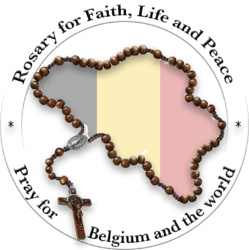
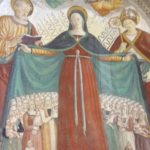
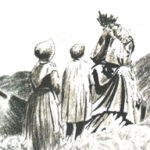 « He is like the blasphemer who abandons his father, he is cursed by the Lord the one who irritates his mother » (Ecclesiastic 3,16). This old say reflects our society which, through many ways, forgets, rejects or even mocks the model of perfect life given to us by Our Lady.
« He is like the blasphemer who abandons his father, he is cursed by the Lord the one who irritates his mother » (Ecclesiastic 3,16). This old say reflects our society which, through many ways, forgets, rejects or even mocks the model of perfect life given to us by Our Lady.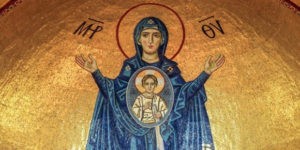
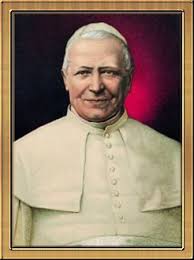 Intended intention: To offer this first Saturday to repair the blasphemies against the Immaculate Conception of Mary.
Intended intention: To offer this first Saturday to repair the blasphemies against the Immaculate Conception of Mary.